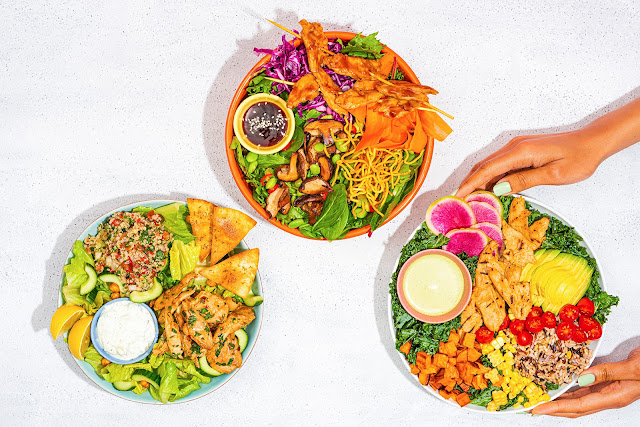How to choose your perfect food marketing agency | fmtmagazine
Trying to choose a food marketing agency to develop your brand or deliver creative work can be a daunting task.
Food coating is love expressed for food, visible to us. Foods contain basic flavour, but coating can serve to improve the taste, texture and flavour of food products. Coating is an industrial process which involves the application of liquids and powders on the surface of food products. (Food Marketing Agency) This is a complex process; food products are sensitive in nature and, thus, need mild treatment and proper processing as deterioration in the form of water loss and enzymatic action due to physical, chemical and other biological reasons can easily take place.
Food coating has taken on a whole new meaning in the age of globalisation and social media. Food around the world is getting trendier day by day, as people are demanding adventure and novelty in their food choices much like the rest of their life. An increasing number of people are now experimenting with different flavour profiles when it comes to their food. In this fast-paced world where people are unable to find time to stay fit and eat healthily, food coating has provided an easy way to make food healthy without sacrificing on flavour. Food Marketing Agency
Food coating allows for a product to be coated with ingredients or materials which render it more palatable whilst retaining the inherent health benefits of the product. For example, otherwise ordinary tasting salads when coated with flavourful dressing turn into appetizing, new dishes. Similarly, a boring vegetable sandwich when coated with flavoured herbs or mayonnaise sauce becomes delicious whilst still remaining a healthy meal option.
Food coating as a technique and process has, among its many benefits, also made it easier for mothers to feed their toddlers. Toppings and add-ons are some of the types of food coating which are hugely popular with consumers. Food Marketing Agency Food items like pizza, wafers, soups, and even fruit and meat products all require additional flavours and coatings. Despite providing tasty and flavourful comfort food, KFC, Subway, Dunkin Donuts and other fast-food chains still offer customers a variety of toppings to coat their food with.
The food packaging industry has also adapted to this growing trend, introducing new kinds of packaging which ensure that the coated products remain fresh and tasty inside the package. The development of Modifies Atmospheric Packaging (MAP) packaging and Ready-to-Eat & Ready-t0-Serve (RTE & RTS) packs was a direct result of this major shift toward food coating in the food product industry.
While it may sound simple enough, the process of food coating is actually heavily technique-based. The process entails the use of a variety of machinery and equipment like mixers, rollers, hoppers, blenders, etc. to prepare and coat the food product. Scientific processes and phenomena including adhesion, surface tension, friction, velocity and crystallization form the core foundation of the entire process in its myriad variations. Food Marketing Agency
The human tendency to snack has been a major factor which has contributed to the growth and development of the idea of coating. The more flavourful a product is, the more one will snack on it. With a highly competitive food product market, coating has become an industry standard as companies vie to make their products more palatable and boost consumer sales. An example of the above is provided by the flavoured chips market, one of the most consumed type of snack the world over.
Flavoured chips have also been the most experimented on snack item in terms of flavour and coatings. Initially, regular potato chips when consumed tasted bland. Flavours and seasoning were developed as additions to regular chips in an attempt to do away with the greasy taste of oil most associated with chips. Factors considered while seasoning chips include the overall shape and size of the chip; a different coating is applied on thin- and thick-layered slices of chips. The flavour imparted to the product will vary according to the thickness and surface area of the chips.
Today, one can find a variety of snacking chips in the market such as tortillas, corn chips, extruded chips, potato chips with chocolate coating, etc. The major objective of coating the chips is to enhance the organoleptic properties of the chips. Seasoning is a key part of the product formulation process; the most common method to season products is using a drum tumbler. Selection of ingredients for food coating is also integral to the entire process. Food Marketing Agency
This should be done wisely, ensuring that ingredients are of good quality. A proper ingredient selection will determine the final taste as well as cost of the product. Usually, seasoning is added to the product in the dry form. However, methods like spray drying and encapsulation can be used to coat products in liquid form. A new ‘slurry’ concept of coating is used with water as a carrier instead of fats or oils. This method is used to produce starch-based snacks where water is removed during the final stage through the process of drying.
As research and development has progressed in this field, edible films for coatings which protect the food surface from damage have emerged on to the scene. Functional additives like protein based hydrocolloids, lipids, polysaccharides, anti-oxidants, nutraceuticle compounds, antimicrobials, etc., have been developed in recent times. These serve to not only protect the food but also increase the nutrition of the product.
Another point of note is that coating requires the successful adhesion of ingredient to the product. More sophisticated coating processes employ the method of spray-drying or encapsulation of the product to ensure proper adhesion. Products made using these methods last longer than those prepared with seasoning simply sprinkled on top. Food Marketing Agency
Coating is an easy process, but it is crucial to employ the right technique in the process. Maintaining optimum temperature conditions as well as timing are key to the successful completion of the process. Further, selecting the right ingredients is also important. Increasing the shelf-life of a product remains a primary concern in the food industry. Thus, methods developed to make chips or snacks last longer can prove to be extremely crucial for stakeholders within the industry.
Indians have been snacking for centuries, but with the advent of new technology in the last ten years, the food product sector in the country has witnessed tremendous growth. Food Marketing Agency In recent years, nachos and other types of snacks normally found abroad have been introduced in the Indian market; garlic salt and peri-peri seasoning are also now popularly used throughout the country.
In the coming years, more experiments with flavours and coatings are likely to take place as people become more adventurous in their eating habits. This shows that while the market for food products might be slow in growth, it will remain a dynamic industry in terms of product creation and development for years to come.





Comments
Post a Comment